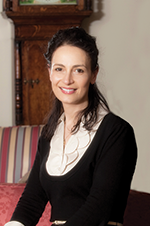Over the past decade, the world has experienced a technological revolution.

When mobile access to the internet was born, with this came exponential and unprecedented growth that has seen access to the internet via a mobile device increase by 60.3% in the last two years. There are now more than 200 social media platforms for consumers to voice their opinions, share their photos and broadcast their location.
Social media has changed the way in which consumers act, react and interact and this month ANTOR surveyed its members to understand the way destinations feel social media has had an impact on their marketing strategy and consumer engagement levels.
Facebook, Twitter, Instagram and YouTube are four of the most established platforms in terms of active users, and Facebook - the oldest of the four platforms - claimed 135 billion monthly active users in 2014. Our opinion poll showed an appreciation of this, as 100% of respondents said that they were not only active on Facebook but that they felt it was one of the most effective platforms for raising brand awareness and distributing their key messages. Other platforms that were highlighted include Twitter, Instagram, YouTube and Pinterest, all of which are very image led.
Davina Took, travel trade manager of Samoa Tourism Authority UK and Europe, highlighted that Facebook and Pinterest were crucial for what is ?a very visual destination?, to be able to share images and raise brand awareness.
Darrin Des Vignes, account manager of the Trinidad and Tobago Tourist Board, noted equal importance for both Twitter and Facebook for overall marketing strategy. ?Our Facebook is used as a showcase tool applicable to both the trade and consumers as the audience is split 50/50. Our Twitter is aimed at the press/media space?, Darrrin said.
With these increasing levels of online activity, tourist boards have had to adjust their marketing strategy to incorporate the digital world. Kylie Clark, head of PR and marketing, Japan National Tourist Organisation, responded that social media has provided a more cost effective and direct, real time link to reach the public than was possible via traditional print media.
Feedback was variable when establishing the percentage of budgets allocated on digital marketing. Results ranged from 5% to 60%, with 80% of respondents reporting a budget allocation of up to 20%, some destinations reported as much as 60%.
ANTOR members also illustrated that it is important to recognise that consumers lean towards social media for authentication through friends or trusted brands when picking a destination.
This is further supported by data from TourismLink that found that 52% of Facebook users said their travel plans were affected by seeing friends? pictures of trips. ANTOR?s poll suggested that this type of organic promotion of the destination by the public provides a gateway for brands to provide targeted and focused information whilst creating visual, interactive content with a live feedback function, to engage with consumers.
Looking forward, the challenge for the travel trade will be translating destination brand awareness and engagement into bookings and for destinations to convert this into visitor numbers.
Let us know your thoughts and join the discussion on Facebook on the ANTOR page - www.facebook.com/ANTORMembership















